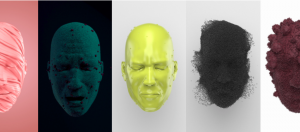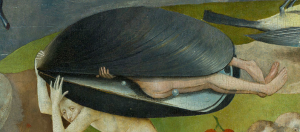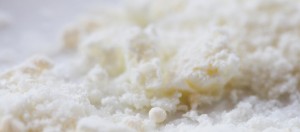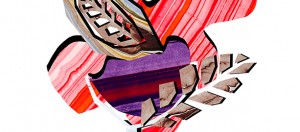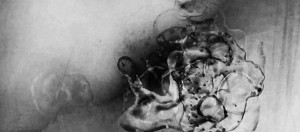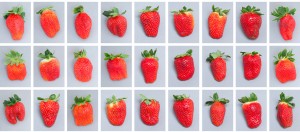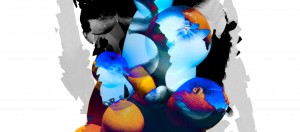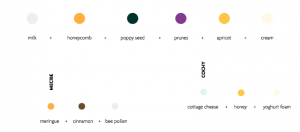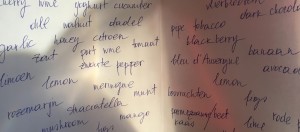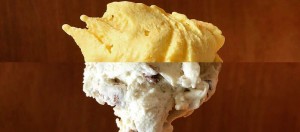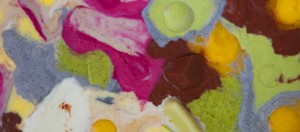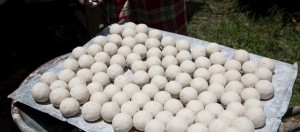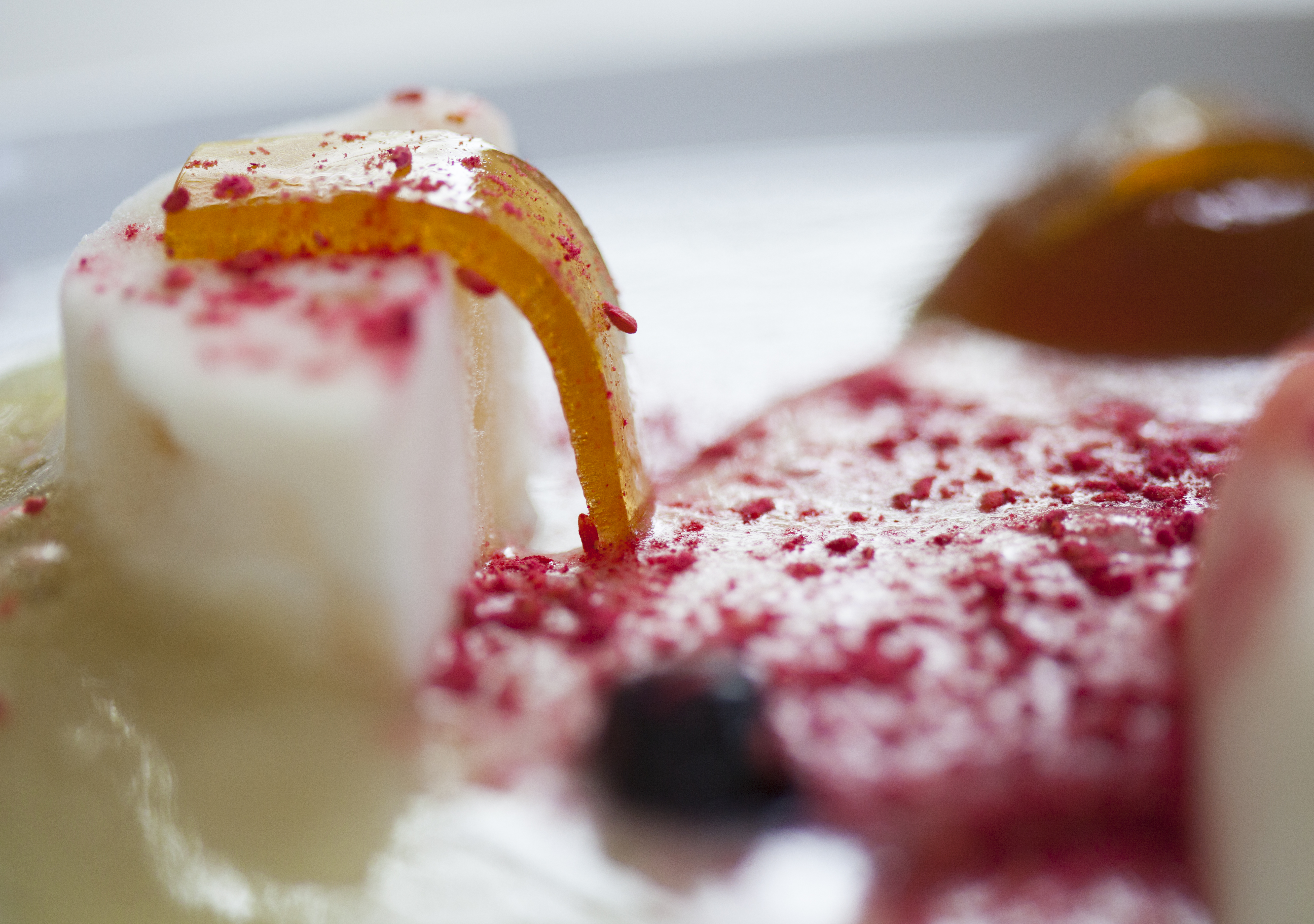
On 6 December 2018, Ludo & Hedo participated in the experience exhibition ACID SALT at Sociëteit Sexyland in Amsterdam with a trippy taste experiment. Our founder Ola spoke with Angela Donskaia from North Mag ahead of the event.
At first glance, Ludo & Hedo seems to be an enchanting gelato shop in the heart of Amsterdam. However, upon stepping inside, you’ll immediately discover that there’s more to this than meets the eye. It’s an experimental platform for cooking below 0*. At their Headquarters in Oud-west, they serve experimental desserts prepared with liquid nitrogen, involving experiments with perception, curiosity and surprise. A culinary and aesthetic trip of wonders, with enlightening textures, shapes and flavours. For ACID SALT, they’ve created an ice-cream flavour which will leave you mesmerized with a trippy after taste. Don’t take this with a grain of salt, but go try it. Ludo & Hedo is representing the taste experience during the event. We had a chat with conceptual founder and visual artist Ola Lanko.
From which focus did Ludo and Hedo start? Was it an aesthetical one or a culinary one?
I am a visual artist myself. I studied at the Rietveld and teach classes at the Royal Academy of Arts, in the Hague. A few years ago I finished my residency at HISK and I felt like the art world was too stuffy. It got me thinking that I love making installations for a broader audience, but I missed the latter a lot in the art world. I felt stuck in the art world where your work only reaches a particular, small audience of art intellectuals. That’s when I decided to expand my career and find another medium where I can express my ideas to a broader audience.
And that medium was Ludo and Hedo?
Yes, I thought I should start my own platform where I am free in deciding over the dialogue I have with the viewer. When my partner and I went to Lisbon, we met an ice-cream maker who was also a scientist. The way he spoke about ice-cream was so intriguing and fascinating. It was not just talking about food, but about life in general, a molecular structure of ingredients, matter. It wasn’t looking at it as ice-cream but as what it actually was. It resonated in me and I started thinking about it a lot about the perception on shape, texture, and taste. All elements that make it what it is, yet are kind of taken for granted.
How did you combine your art practice with an experimental platform for cooking below 0°C??
I wanted to extend my practice into a more democratic medium. Food is something very intimate: food enters someone’s body, which is also based on trust and very direct way of consuming it. People seem to be a lot more open towards new experiences related to food than art. But just like art, food can also just create space for a dialogue and get you into thinking.
How is art related to food in that sense?
Art is a space for dialogue and thinking about issues of importance. But the mediation of the institute blurs that option. With food that’s different. People come by to taste something and it somewhat proves they like it if they buy it again. But of course there is the freedom to not like it. We just want to try to offer the space for experimenting with taste. It’s more of an experience and experiment into looking differently at the world. Ice-cream is then only a medium. Our goal is to offer a new way of thinking or to stimulate a critical way of thinking about food and maybe other things.. For example we have an ice-cream flavour with blood. The response is usually very surprised, but gets people into thinking about their natural response as soon as they know part of the taste is created with blood.
Would you refer to it as an artistic restaurant, as you’re also interacting with people and serving them?
In a way, yes. We don’t do performances or art presentations in the classical sense. When people come here they are coming to a restaurant, but what they find is different from what they expect. We create a certain noise in the perception people are used to. Shake it. Destabilise it. And there’s no mediation like in a museum. It should feel comfortable.
It’s seems like a new genre you’re writing. New poetics.
That is for our visitors to decide if we do. But it would make me very happy if that’s true.As we try to get into people’s memories, their nostalgia. Because everyone has a certain memory of eating ice-cream. Everyone has a first story and connection to it. That also makes it slightly easier to create an emotional connection to it. So there’s destabilisation, but also holding on to this certain memory you already have to it. In that sense we disrupt the tradition of ice. Although we need to take tradition with a grain of salt. As originally, looking back to the 18th century, ice was more savoury in taste.
Are you trying to measure perception? And is that even possible?
No, it’s so personal and it would take away the possibility of surprise. However, we do like to talk to our visitors about their reactions though. During our experimental dinners, we always make a round after it is finished to hear what people felt and how they experienced it.
Do you think a lot about the names of your desserts and ice creams? Are they infused with poetry as well?
Well currently the names on our menu at Headquarters is inspired by Malevich paintings, as we are researching and the different forms it can take.If you discover it, it’s great, but if not also fine. Everything is thought of into great detail, but it’s optional to look for the story behind it or not. There’s a lot of hidden hints which help shape the experience.
And you only work with natural products?
Yes.
Everything in this space seems to remind of the natural four elements: earth, water, fire and air. Is that something conscious?That’s a very conscious decision, yes. While designing the desserts I take into account all those elements as well. Something can enlighten you, something can cool you down. All the elements need to be in balance. Like finding neutralisers or energisers. It’s more of a holistic concept. So I’m trying to make a dessert where all of the 4 elements are coming into balance. It’s like a journey in 1 dish.
What flavour from the menu would you connect yourself to?
I would say the shapeshifter.
What do you think about when you hear the word acid salt?
Actually very literally: acid and salt. They are important elements for me to work with. Acid is also a taste enhancer and preservative and you can do a lot with acid. Almost always marginalised as an element. Without acids there is no taste. Acid enhances all flavours. It isn’t always looked at in a glamorous way.
For the original publication, please go to http://nrthmg.com/ludo-hedo-art-infused-ice-cream
